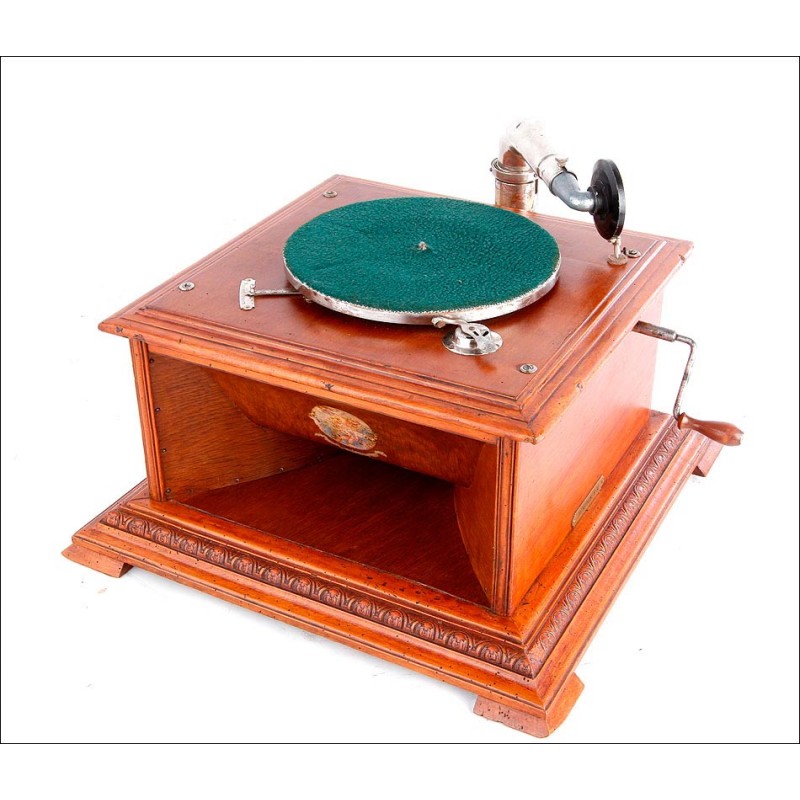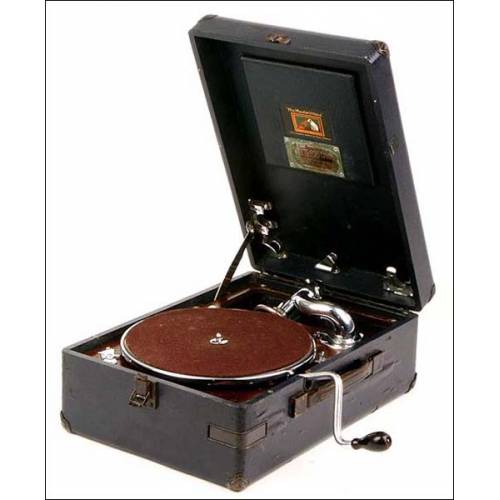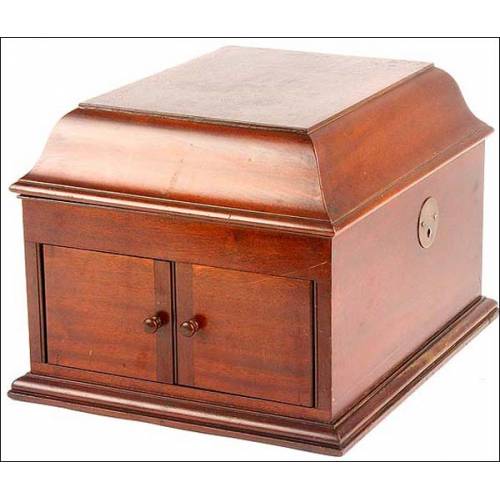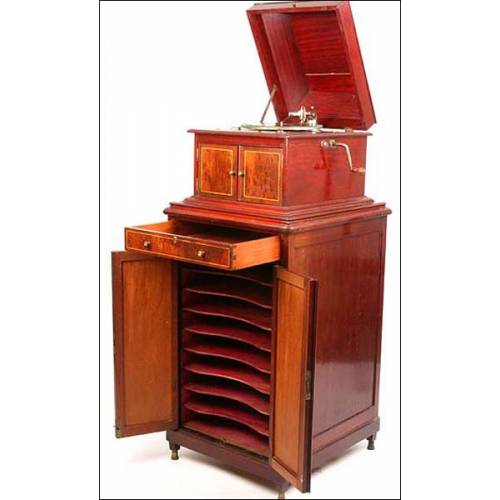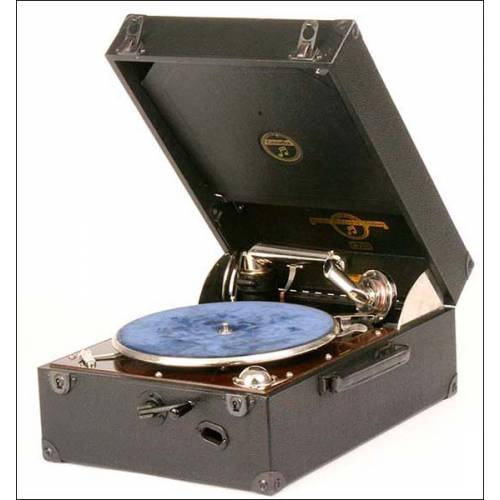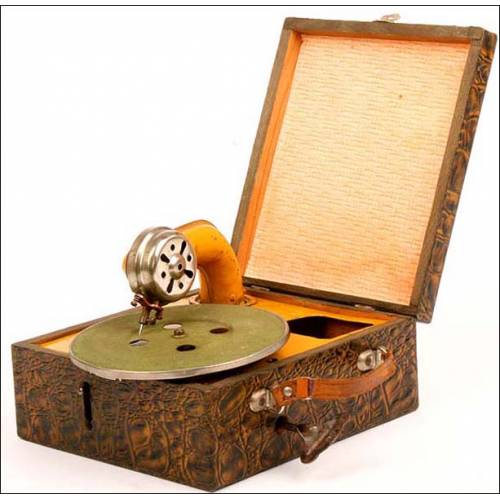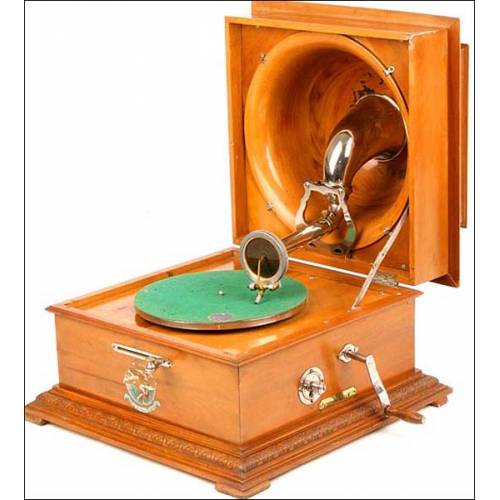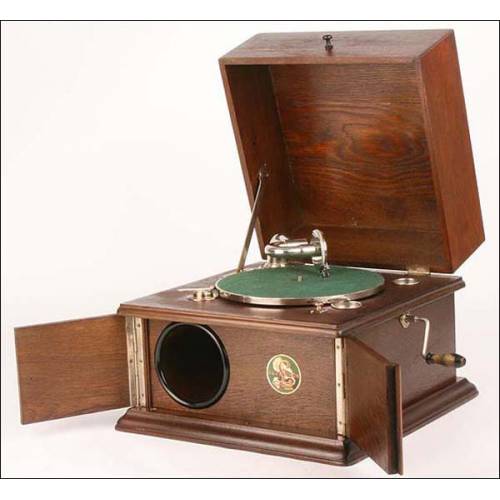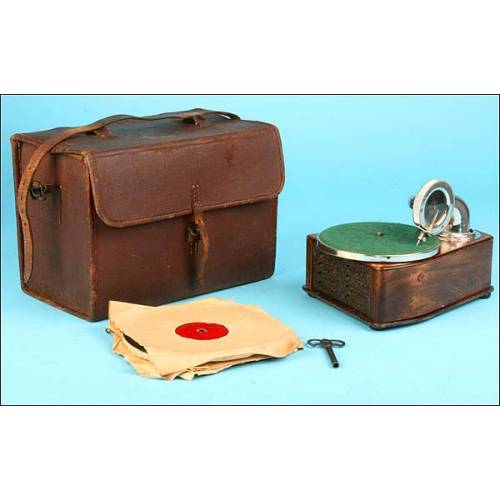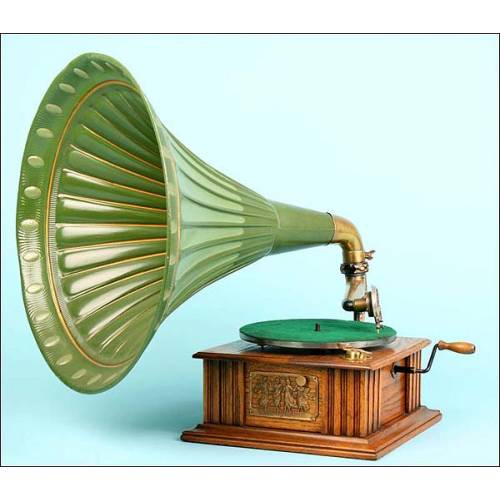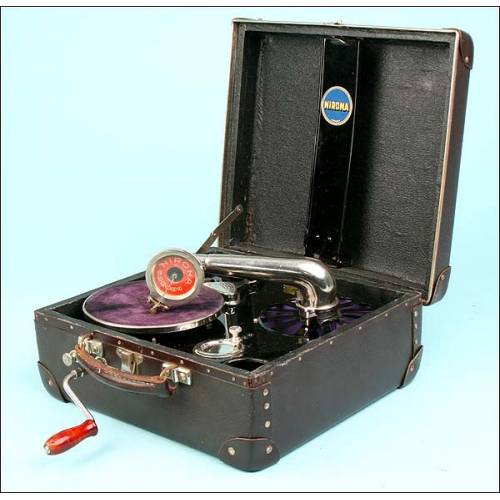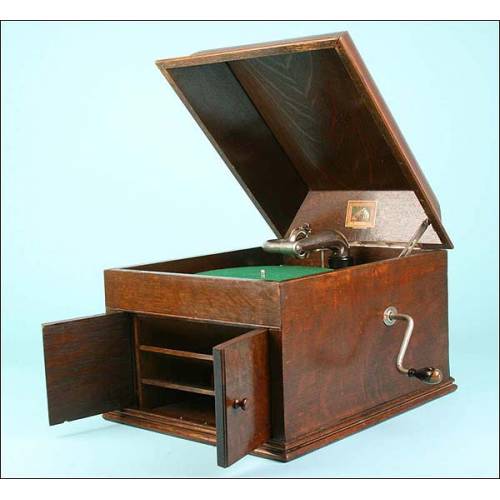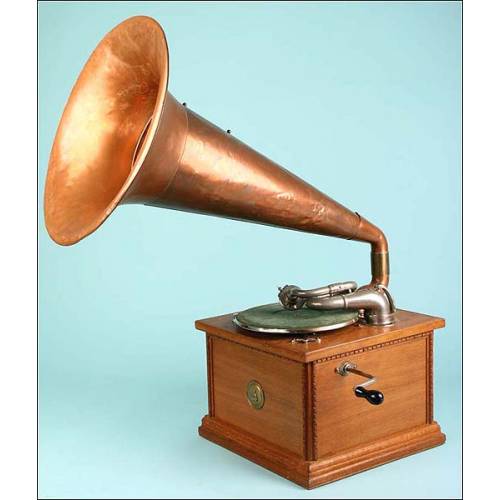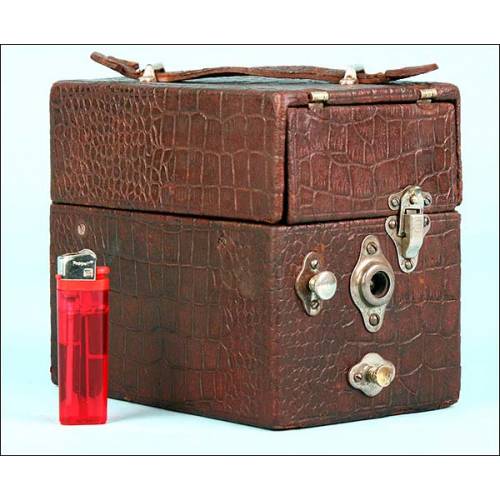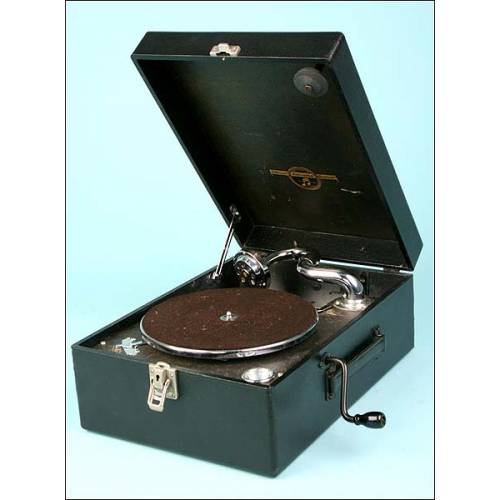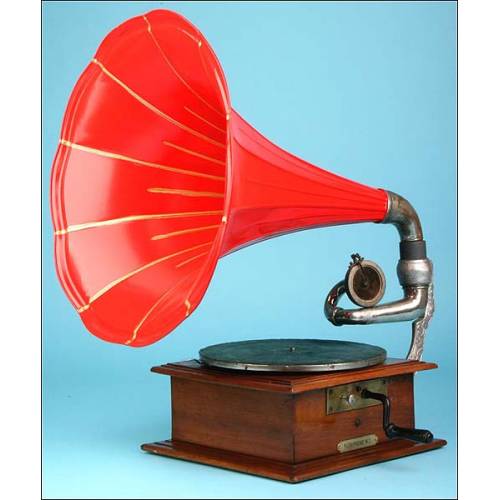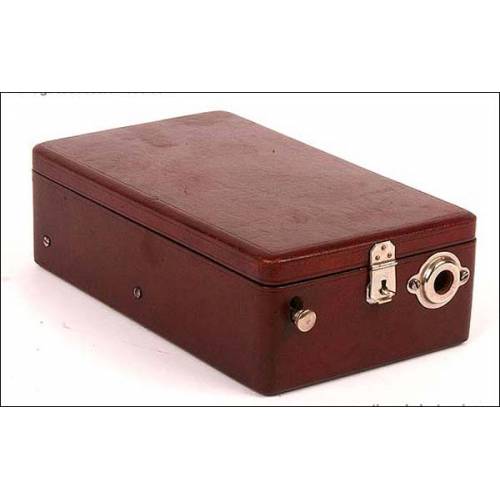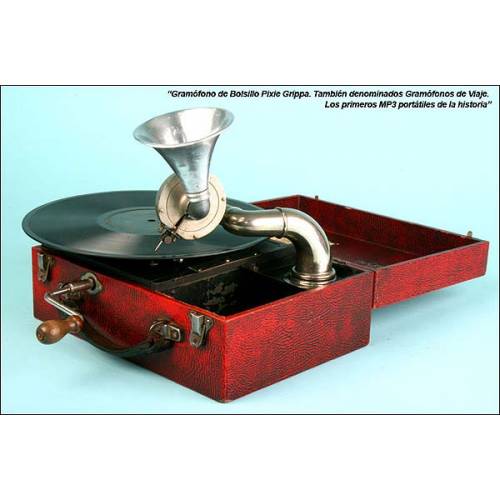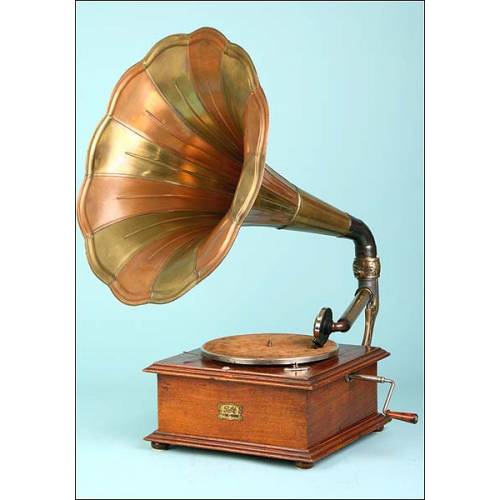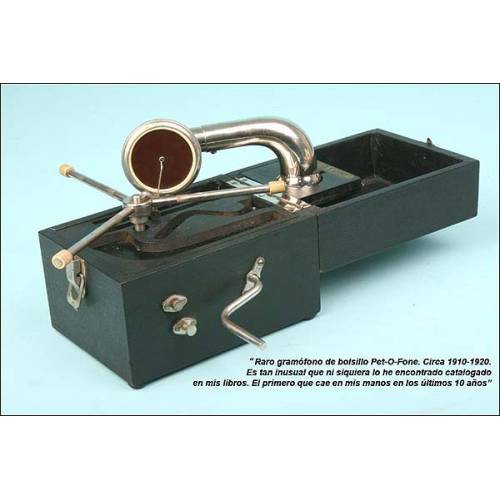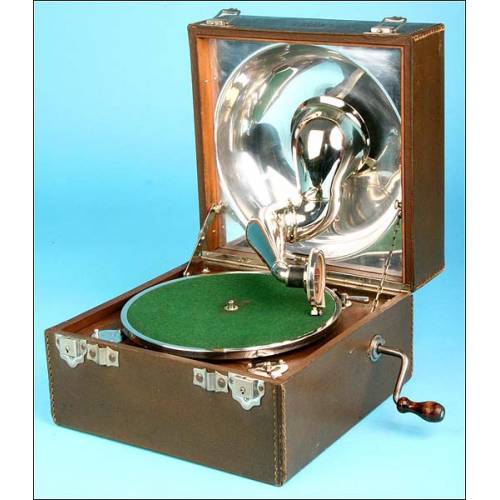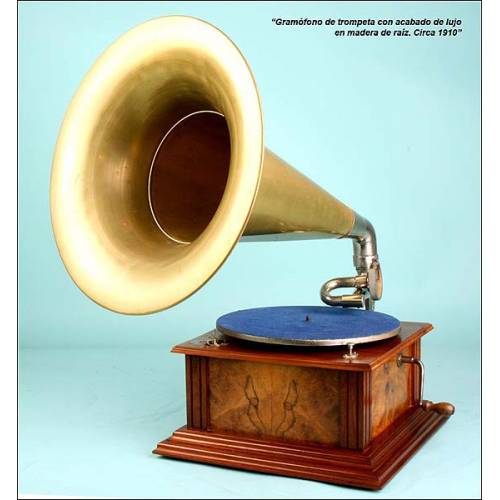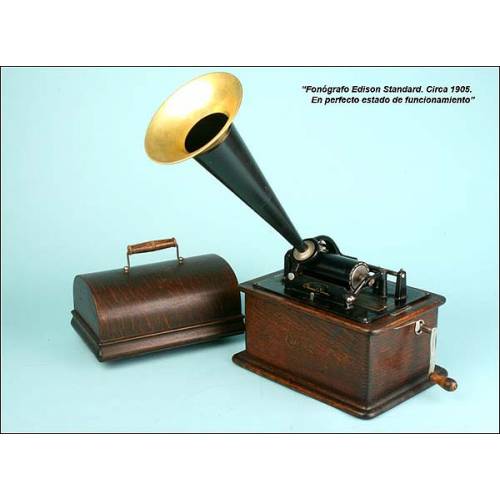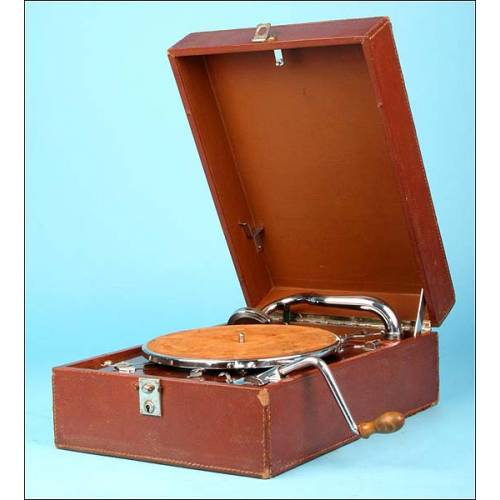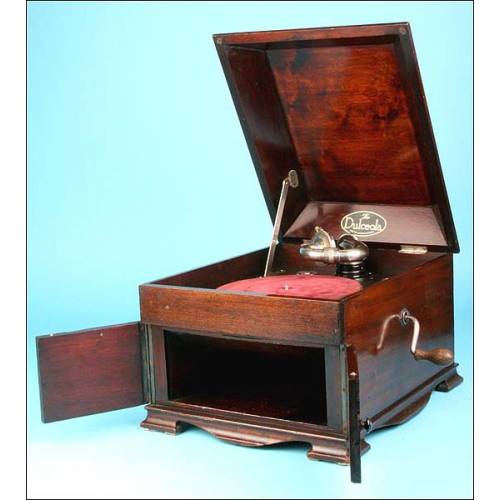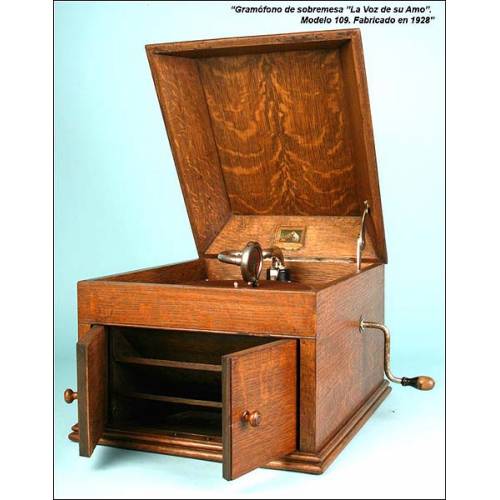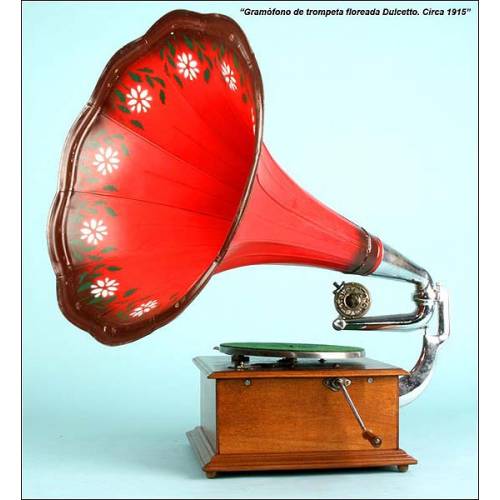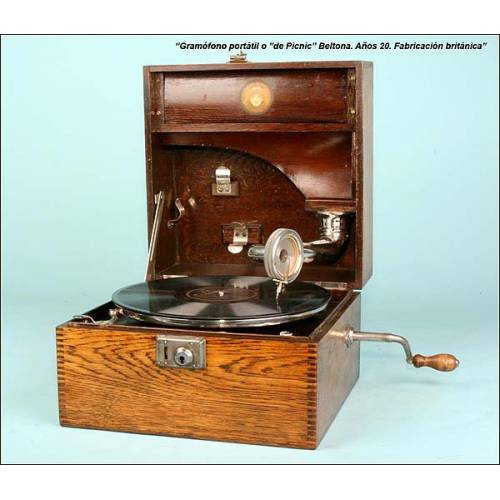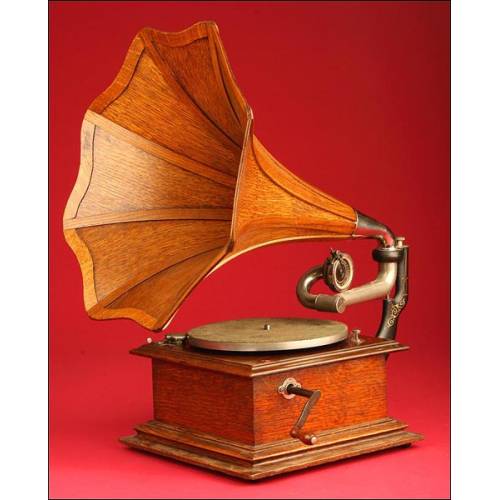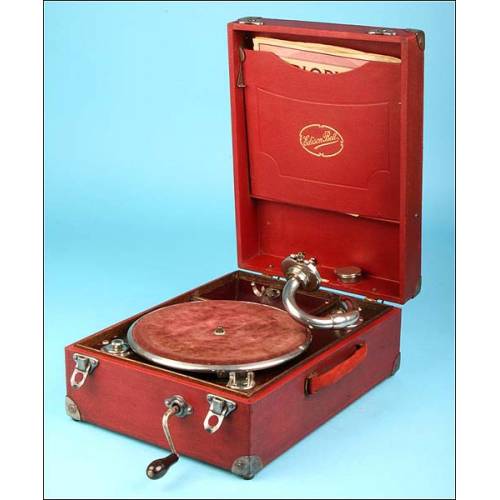B-864
Antique Pathéphone No. 30 Mantel Gramophone. In good working order. France, 1920s
Classic tabletop gramophone Pathéphone No. 30 in working order. Elegant and original.
Sold!
Wonderful antique Pathéphone Nº 30 table gramophone, in good condition and optimal working order. This article comes from France, where it was made in the 1920s by Pathé Frères. It is in excellent condition and working order: the motor has been fully dismantled and fine-tuned in order to guarantee a flawless performance. Currently the gramophone provides a clear and neat sound. The wooden box has also been restored: although it shows some slight signs of woodworm attack, it has already been treated and fully eradicated. All the component parts and pieces are original from the period and remain in perfect working order. The reproducer is not from the model although it's antique. The box is made of light-colored mahogany wood and shows off a nice hand-carved fringe at the base. The original French-polish finish has been restored and nowadays it creates a lovely satin protection over the golden wood. The turntable, the arm with the reproducer and the elbow that connects it to the box are made of silvery metal, in good condition and showing only slight signs of wear due to the trace of time. The arm shows a discreet reparation in the metal. Attached to one of the boxs sides we can see a small golden metal plate with the gramophones model, PATHÉPHONE Nº 30, engraved in capital lettering. At the front side of the article, one of the wavy wooden pieces that make up the speaker preserves an original colorful decal. Classic and charming, this antique Pathéphone Nº 30 table gramophone is a sober and elegant piece with a high-quality sound. Measurements: Box: Side: 18.5 in / 47 cm. Height: 9.8 in / 25 cm. Total Height: 13.3 in / 34 cm.Pathé Fréres - History The company was founded as Société Pathé Frères in Paris, France in 1896, by the four brothers Charles, Émile, Théophile and Jacques Pathé. During the first part of the 20th century, Pathé became the largest film equipment and production company in the world, as well as a major producer of phonograph records. Charles Pathé had helped open a gramophone shop in 1894 and established a phonograph factory at Chatou. Having decided to expand the record business to include film equipment, the company expanded dramatically. To finance its growth, the company took the name Compagnie Générale des Établissements Pathé Frères Phonographes & Cinématographes. In 1902, Pathé acquired the Lumière brothers' patents; by 1909, they had built more than 200 movie theaters in France and Belgium. By the following year they had facilities in Madrid, Moscow, Rome and New York City plus Australia and Japan. Prior to the outbreak of World War I, Pathé dominated Europe's market in motion picture cameras and projectors. I

